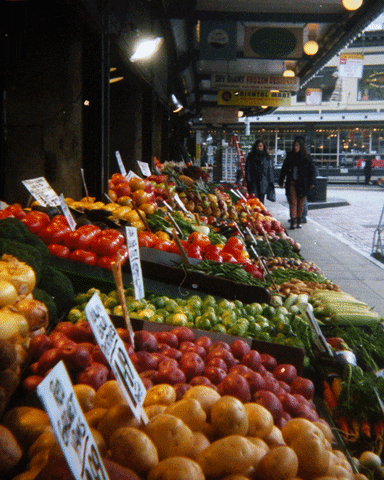Why it's Important to Eat In Season Foods
One thing I’ve learned along my health and wellness journey is that you’re never really as healthy as you think you are!
Hence the term journey.
And thanks to TikTok, one of my more recent discoveries has been the importance of eating seasonal foods.
This may be known, or even second nature to some. But [no] thanks to how easy it is for us to simply go into a grocery store and find almost any kind of food at any time of the year - IN ADDITION TO corporations greed and need to monopolize, and in many cases genetically modify, these foods in order for them to be produced year round - many of us simply aren’t aware of the downside of consuming non-seasonal foods.
Eating according to the season is not only less expensive, but it’s better for your health, as well as the health of our planet! Below you’ll find a list of in season [fall] foods; where you can find them; and why eating these foods seasonally matters.
In Season Foods
There are a lot of free resources online and within your community that list which foods are best for any given season. These lists of course will vary depending on where you live, but they shouldn’t be hard to find.
A list of seasonal foods throughout the US includes;
Apples
Bananas
Beets
Bell Peppers
Broccoli
Brussels Sprouts
Cabbage
Carrots
Cauliflower
Celery
Collard Greens
Cranberries
Garlic
Ginger
Grapes
Green Beans
Herbs - rosemary, sage, thyme, and parsley are especially abundant during the fall
Kale
Kiwifruit
Lemons
Lettuce
Limes
Mangos
Mushrooms
Onions
Parsnips
Pears
Peas
Pineapples
Potatoes
Pumpkin
Radishes
Raspberries
Rutabagas
Spinach
Sweet Potatoes & Yams
Swiss Chard
Turnips
Winter Squash
Some helpful resources for finding seasonal foods are;
Save Money!
In-season foods are abundant. Thus, easier to find and usually easier / less costly to transport. Therefore, the final cost to the customer is lower. Versus out-of-season foods, which tend to be less abundant, more difficult to source and / or produce; more difficult to find; and more costly to transport, which will have the opposite effect on the final cost.
Support Small and / or Local Produce Manufactures
If COVID taught us anything, it’s the importance of supporting our local / small businesses.
When it comes to fresh and seasonal foods, this is especially true, because it helps keep our food supply supplying, while simultaneously keeping the community healthy. And to capitalize on those savings from our previous point, check out your local farmers market or grocery store for slightly lower prices on organic options.
It’s Just Healthier!
As previously mentioned, seasonal foods (given ideal growing conditions) are abundant. These foods are usually picked at the peak of their nutritional value - containing a range of important antioxidants, minerals, vitamins and enzymes which support our bodies natural ability to heal and restore itself.
Whereas out-of-season foods are scarce - if at all existent. Therefore, these foods are usually genetically modified - which has adverse effects on our long-term health, and contain little to no nutritional benefits. In addition to not being healthy, out-of-season foods sometimes require processes that are strenuous on the Earth and its natural resources.


